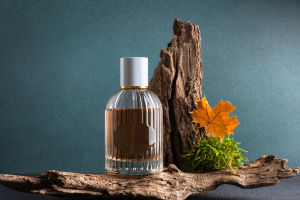Clothing matching is about more than just putting together pieces that look good individually.
It involves the thoughtful coordination of style and color to create an overall appearance that is balanced, polished, and appropriate for the occasion.
Achieving a "decent and generous" effect means dressing in a way that is tasteful, respectful, and flattering, while also ensuring that your outfit reflects your personality.
Here's how to master the art of clothing matching by focusing on the key elements of style and color coordination.
1. Understanding Style Coordination
Style coordination begins with selecting pieces that complement one another in terms of their cut, fabric, and overall aesthetic. Whether your look is casual, business formal, or somewhere in between, the individual items of clothing should work together to create a cohesive ensemble.
For example, if you're dressing for a formal occasion, pairing a tailored blazer with fitted trousers or a sleek skirt works well. Mixing formal and casual items, such as a blazer with jeans, can also be effective when done thoughtfully.
The key is to maintain balance—don't combine overly casual or overly formal pieces unless the mix is intentional and harmonious.
It's important to also consider the proportions of your clothing. Pairing loose-fitting items with more structured pieces often works best. For example, if you're wearing a flowy top, match it with fitted pants or a pencil skirt to balance the silhouette.
Conversely, a form-fitting top pairs nicely with wide-legged pants or a flared skirt.
2. Mastering Color Coordination
Color coordination is a major aspect of clothing matching. Wearing the right colors can enhance your appearance and bring an outfit to life, while clashing colors or mismatched tones can detract from the overall look.
Start with a basic understanding of the color wheel, which helps in pairing colors that work well together. Colors that are opposite each other on the wheel, such as blue and orange, are complementary and create a striking contrast when combined.
Analogous colors, such as blue and green, sit next to each other on the color wheel and offer a more harmonious blend.
Neutral colors like black, white, gray, and beige are versatile and can be paired with nearly any color. They serve as a great foundation for any outfit, allowing you to add pops of color with accessories or outerwear.
If you're unsure about color pairing, sticking to neutral tones with one accent color is a safe and sophisticated choice.
Monochromatic outfits, where all pieces are in shades of the same color, can also be elegant and visually appealing. To avoid looking flat, vary the textures and shades within the color family to add depth.
3. Dressing for the Occasion
Matching your clothing to the occasion is an essential part of creating a decent and generous effect. Formal events call for structured, elegant clothing in more subdued colors, while casual settings allow for more relaxed styles and playful colors.
For work, opt for professional attire that aligns with your office's dress code. Neutral tones, classic cuts, and minimal patterns are generally safe choices for a professional environment.
For a casual day out, you can experiment with brighter colors, bolder patterns, and more relaxed fabrics, but still aim for balance and cohesion.
4. Accessorizing Thoughtfully
Accessories play an important role in completing an outfit, but they should enhance rather than overpower your look. When coordinating your clothing, choose accessories that complement both the style and color of your outfit.
For example, a sleek, minimalist outfit pairs well with simple, understated jewelry, while a more eclectic or bold outfit can handle larger, statement accessories.
Clothing matching is about coordinating style and color to create an outfit that is balanced, polished, and appropriate for the occasion.
By understanding the principles of style coordination, mastering color pairing, and dressing for the occasion, you can consistently achieve a look that is both decent and generous.
Whether dressing for work, casual outings, or formal events, thoughtful clothing matching enhances your overall appearance and allows you to express your personal style with confidence.


